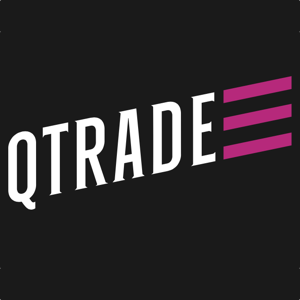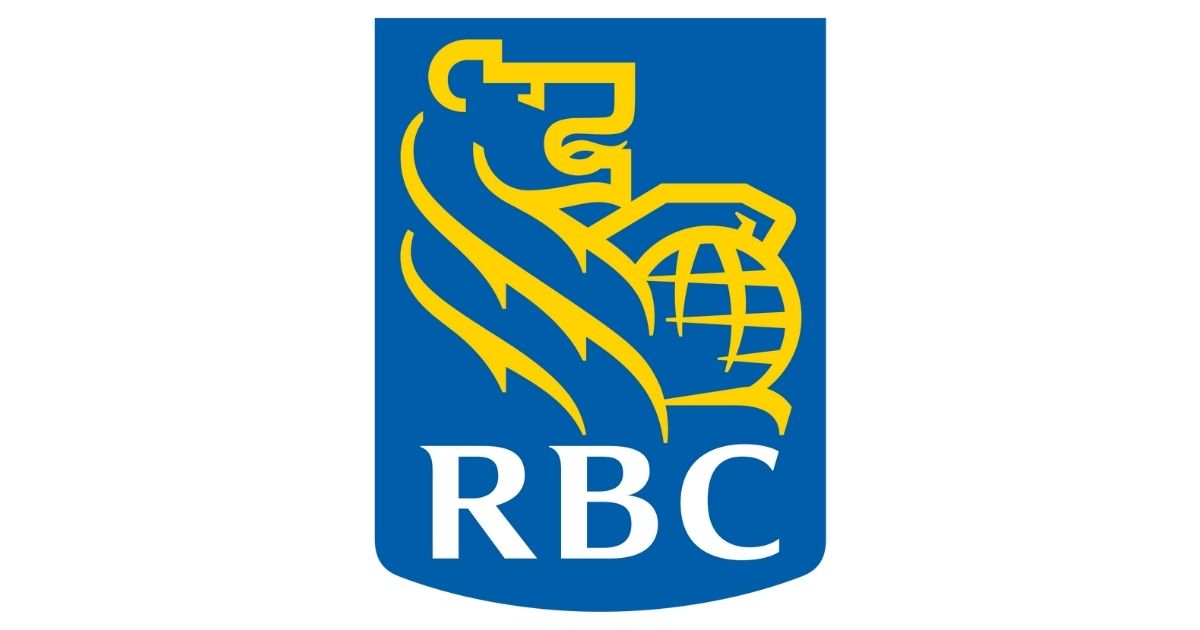Safety, stability, and healthy dividends – The three adjectives describe the Canadian bank stocks quite accurately, and as the leader of the pack, the Royal Bank of Canada (RBC) is perhaps the best manifestation of everything that makes Canadian banks coveted investments.
It’s almost a must-have stock in almost all Canadian portfolios (conservative or adventurous), but if you are planning to open a sizeable position in this asset, you have to look into it a bit more thoroughly. I am writing this review to help you realize how much of your capital is this bank stock worth.
Stable Dividend-Growth Stock
Royal Bank of Canada offers a powerful combination of capital appreciation potential and generous sustainable dividends with minimal risk.
- Stable and modestly generous dividend stock.
- Sustainable capital appreciation potential.
- Minimal risk.
- Offers exposure to one of the safest banking sectors.
- Usually very reasonably priced.
- Too much exposure to the housing market.
- Not ideal for short-term growth.
- Correction/Stagnation periods can be long term.
Features And Benefits
Understanding what makes the Royal Bank of Canada a reliable and investment-worthy business can help you realize whether it’s the stock for you.
History

The Royal Bank of Canada predates the country of Canada and started its journey in 1864 as the “Merchants Bank” in the Halifax waterfront. It got a federal charter in 1869 and started developing an international presence as early as 1882 when it reached Bermuda. The presence in the US started in 1899 (New York).
The financial institution got its current name: The Royal Bank of Canada, in 1901, part of the national expansion.
The first branch in Toronto opened in 1903. With branches in 801 communities and 18.7% of the total banking market share, it grew to be the largest bank in the country by 1925 (after absorbing Union Bank and Northern Crown).
It earned multiple titles over the decades and has established itself as the most powerful Canadian bank.
Company’s Size And Presence In The Sector

For several years, the Royal Bank of Canada enjoyed the top spot on the TSX as the largest security by market capitalization. It’s the top dog even among the large-cap asset pool in Canada.
It was displaced by Shopify in 2020 but reclaimed its spot in early 2022. The fluctuation of the two companies as they each sit on the top chair might continue in the future.
But the Royal Bank of Canada is not the largest bank simply by virtue of its market cap. It’s the largest lender in Canada since 2018. In 2021, it fell just a smidge short of being the largest bank in Canada by total assets (Toronto Dominion was the first).
It’s also the second-largest by the number of customers (14 million). Here, the margin is sizeable enough that it’s likely to stay that way, though it has the highest market share of high-net-worth Canadian clients.
With 1,182 branches and 4,032 ATMs, it also has the largest retail presence in the country. Wealth management is another business segment where RBC leads the pack.
Its international penetration is also quite significant. It has customers in 29 countries, and in many of these countries, RBC’s presence can be traced back decades. This, along with the assets under its administration and management, makes RBC the 11th largest global investment bank.
Risk Profile

The size and the leadership position of the bank, not just in the Canadian market but in quite a few international markets where it operates, comes with a considerable “upside” from a stability perspective.
The bank, thanks to its position in the Canadian financial market, holds a lot of sway over the market, even with regulators dictating strategy and charting the course for the Canadian banking sector, which is conservative enough in its own right.
Another strong point in the bank’s favor is the revenue mix. It makes most of its money from its private and commercial banking services, but that usually makes about one-third of its total revenue spread.
Wealth management and capital markets make up a sizeable chunk, while the rest comes from insurance and Investor & Treasury Services. The revenue spread is likely to be RBC’s strongest asset as digital banking starts eroding banking fees (and revenue generated from them) at an expedited pace.
Speaking of digital banking, more than half of RBC’s 14 million Personal and Commercial banking clients are active digital users, which indicates a healthy digital adaption, mitigating the risk that the bank might lose out in this area.
However, the bank is not infallible. Being the largest lender in the country, it potentially absorbs most of the risk when people start defaulting on their loans. And since it makes up 27.4% of the mortgage market in Canada, it might be more vulnerable to a major housing crash than most banks.
However, these risks are mitigated by conservative lending as well as the bank’s considerable assets, allowing it to absorb more losses without becoming financially unstable.
And after its performance during the great recession and 2020 crash, it wouldn’t be a stretch to say that it’s one of the least risky stocks you can invest in, not just in the banking sector but the TSX as a whole.
At the time of writing this, the beta for RBC stock is 0.79, endorsing its safety.
Metrics To Look Into

There are quite a few metrics you should look into when analyzing RBC stock (or any bank stock):
Valuation Ratios: The price-to-earnings and price-to-book should always be evaluated compared to other bank stocks to consider whether RBS is fairly, over, or undervalued.
Tier 1 Capital Ratio: It’s an important risk-related metric, almost exclusive to banks. It’s a ratio between a bank’s core equity and all the risk-weighted assets the bank has on its books. The minimum (for adequate capitalization) is 6%, and RBC didn’t even drop below 11% in the last decade.
Efficiency Ratio: It’s a simple expense to revenue ratio indicating how responsibly the bank spends its revenue. 50% or below is ideal. The farther away from the 50% ratio, the riskier it is. Even if it doesn’t trigger major financial trouble, it may impact the bank’s dividends. A complementary metric would be Return-on-Assets.
CAGR: The CAGR will give you a good idea of the bank’s short-term and long-term return potential, based on the CAGR period you are evaluating. And if you are buying this stock for long-term (decades), a ten-year CAGR might be a good indication of what the bank stock can offer.
There are several other metrics and ratios that might be worth considering. But the four above make up a good combination of valuation, risk, fiscal responsibility, and growth potential.
Dividends

The Royal Bank of Canada has been paying dividends since 1870, so even though it’s not the oldest, its century-old track record is admirable. Its dividends are one of the primary reasons it’s one of the most coveted stocks currently trading on the TSX.
And in 2021, the bank paid about 40% of its income to the shareholders via dividends.
Even though the recent aristocratic history is relatively short, the bank actually started growing its payouts from 1997 (at least). The first major break, when the bank actually slashed its dividends, came during the great recession.
Then, it started growing its dividends again in 2012, with a little dip in 2015. Another pause came in 2021, but that was a regulatory issue.
Given this history and the stable payout ratio the bank has maintained over the years (usually less than 50%), it is a testament to the safety and sustainability of the dividends.
The payouts themselves are quite decent. Between 2012 and 2022, the dividends grew over 100%. If we spread it out over the decade, that’s more than enough growth to keep your dividend income from this stock one step ahead of inflation.
The yield usually ranges between modestly high (3.5%) and high (5%), so you can capture most of the dividend upside (and possibly a great value as well) by buying when the stock dips. The dividend might be in trouble if the payout ratio remains above or around 60% for a few consecutive years.
Performance
While the dividend-based return is endorsement enough for this well-known bank stock, the capital appreciation potential is worth considering as well. The bank has displayed remarkable growth in the last two decades, growing a bit over 680%.
If you had invested just $1,000 in the bank when 2001 started, you would have grown it into over $7,850 by the first week of 2022 or a whopping $12,400 if you had opted for a dividend reinvestment.
The collective power of its capital appreciation and dividends is phenomenal, especially for the bank that was already the largest in the country and conservative investment.
The CAGR for that period would be a little over 9.1%, which is quite sustainable considering the bank’s prospects, financial strength, and the overall stability of the Canadian banking sector.
And even if it achieves about 80% of its past two-decade performance in the next two decades (a highly plausible scenario), you can still grow your capital over four times.
RBC Stock Forecast 2025
Following the 2020 crash, most bank stocks started growing at an uncharacteristically high pace, and the banking sector’s growth run lasted far longer than other sectors. However, this kind of growth is usually accompanied by a correction, even if the stock is technically not overpriced.
And considering the historical stock pattern, it seems most unlikely that the stock will become stagnant and dip somewhere in 2022. The dip and stagnation may come in reverse order, but it’s likely to happen, and that pattern will hold for at least a couple of years.
Complicating the matter further is the housing market and RBC’s exposure to it. If the housing market crashes any time between here and 2025, the bank may struggle to reach its current share price by 2025, let alone see any significant growth.
But whether the bank stock falls under its own weight or is triggered by a broad market event, the dip or a period of stagnation will be followed by another phase of a bull run.
The sooner the stock dips, the sooner a new organic recovery phase that corresponds to the bank’s natural growth pace will begin. So in 2025, we might see a price around $110, or if the stock has already turned a corner, somewhere around $130 pr $140 per share, but that’s a highly optimistic scenario.
Stock Alternatives And Competitors
The most natural alternatives as well as competitor to the RBC stock is another bank stock.
Toronto Dominion Stock vs. Royal Bank Of Canada Stock
Despite having a lower market capitalization, Toronto Dominion has surpassed the Royal Bank of Canada in a number of avenues. Most notably, in the total number of customers it serves and the total assets.
In the last two decades, TD didn’t grow as much as RY (capital appreciation), but the gap wasn’t too wide.
However, it has been more generous with its payout growth. Both banks tend to offer very similar yields, and in recent years, TD’s dividends (considering the payout ratio) have been slightly more stable than the RYs.
TD has a high chance of surpassing RBC in the next decade or so, but they would still be very similar choices, with RBC having a slightly higher edge when it comes to growth.
Enbridge Stock vs. Royal Bank Of Canada Stock
As an energy company, Enbridge is phenomenally different from RBC. The two are not even affected by many of the same broad market circumstances. But they are both leaders of their respective sectors.
However, no energy company is as close to Enbridge (in magnitude) as TD is to RBC. Out of the two, ENB is a more dividend-centric stock. The yield is usually much higher than what RBC offers and sustainable, thanks mostly due to the stubbornness of the Enbridge management than actual financials.
But Enbridge’s capital appreciation potential is almost non-existent compared to RBC and might only weaken further over time.
Banking ETFs vs. Royal Bank Of Canada Stock
Banking ETFs are a viable option. They offer more safety thanks to diversification, but if the sector falls, the ETF might suffer just as much as the standalone RBC stock may be more.
But the safety comes with a price, which is usually the return potential of the ETFs. And if the growth is slow, even the minimal 0.2% fee might seem like an extra burden. The ETFs can be just as generous (some even more so) with dividends.
How to Buy RBC (TSX:RY) Stock in Canada
The cheapest way to buy stocks is from discount brokers. My top choices in Canada are:

- 105 commission-free ETFs to buy and sell
- Excellent customer service
- Top-notch market research tools
- Easy-to-use and stable platform

- Stock and ETF buys and sells have $0 trading fees
- Desktop and mobile trading
- Reputable fintech company
- Fractional shares available
To learn more, check out my full breakdown of the best trading platforms in Canada here.
Conclusion
RBC is your second-best capital appreciation bet among the big six (after National Bank of Canada), considering the performance in the last two decades. And it usually offers a modestly high yield. It’s as financially safe as a Canadian bank stock can be (and more so than some).
Its international presence combined with its revenue stream and digital user penetration so far indicates healthy growth potential for the next couple of decades. It’s a conservative stock with powerful long-term growth potential.
It gets an enthusiastic Wealthawesome thumbs up. So even if you are adamant about buying just one bank stock, RBC would be a very reasonable choice.
And if you are still unsure, comparing it against some other dividend aristocrats might help you make up your mind.







hi
I would like to open an account right now with wealthsimple or questrade what is the difference?
For the 1st time i’m interested in zeb bank etf perhaps i should wait for a correction before i start buying for now i’d like to just open an account.
Do you have a high interest money account where i can deposit cash
Thank you
See my comparison here https://wealthawesome.com/questrade-vs-wealthsimple/ and for a high-interest savings account try EQ Bank: https://wealthawesome.com/recommends/eq-bank